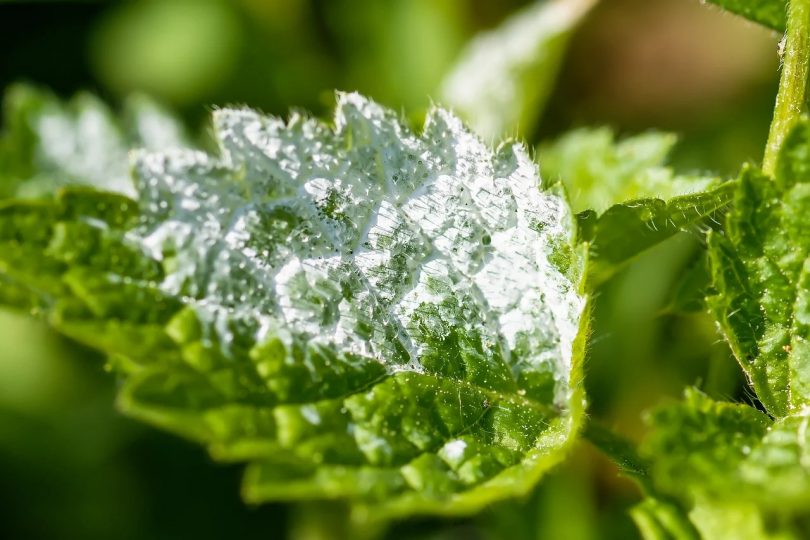If you have a garden, you’ve probably encountered powdery mildew.
Powdery mildew is one of the most common fungal plant diseases in the world. Infected plants are easy to spot because powdery white or grey blotches appear on the leaves. Left untreated, the leaves will become discolored and may fall off. Powdery mildew is rarely fatal, but it can weaken the plant and affect the quality of its flowers and fruit.
Powdery Mildew Prevention
You can take steps to reduce the likelihood that your plants will be affected by powdery mildew. The fungus thrives in warm, humid environments with little light. To combat this, here are a few things you can do:
- Make sure your plants receive adequate sunlight. You can help make sure this happens by choosing a good planting spot.
- Space your plants well so air can circulate. This will help reduce the relative humidity.
- Try not to over-fertilize your plants because new growth is more susceptible to powdery mildew. A rush of fresh leaves all at once could provide a feeding ground for the fungus.
- Use an organic fungicide. This is both a prevention and a treatment method. Sulfur is considered effective for prevention.
Powdery Mildew Treatment Methods
The best way to deal with powdery mildew is to start treating it as soon as you’re aware of the symptoms. Left untreated, the problem will only grow worse. There are both commercial and home remedies that you can try. Here are a few of the most common ways to treat powdery mildew:
- Make a baking soda solution. Baking soda, organic plant-oil soap (not detergent), and water create a useful mixture that you can spray on affected plant areas. This is one of the most common home remedies. Potassium bicarbonate can also be used.
- Combine milk with water and spray affected areas to help halt spore germination.
- Horticultural oils such as neem oil or jojoba oil may be effective for mild-moderate outbreaks but shouldn’t be used with sulfur or in high temperature environments (above 90 ºF).
- Bacteria-based fungicides such as those incorporating Bacillus subtilis work by feeding on the powdery mildew.
- Trim and prune infected leaves/areas judiciously and disinfect tools.
Image source: fotoblend via Pixabay








